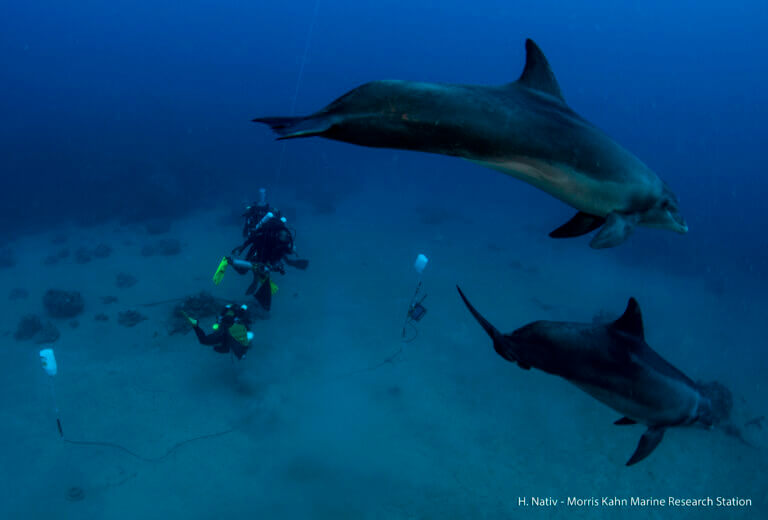According to the researchers, the dolphins communicate in a different way and change their vocal behavior when they encounter the noise of a ship and therefore they are definitely affected by the noise of the ships. Past studies have already shown that a change in vocal behavior can be related to stress and distress

A new study conducted at the Charni School of Marine Sciences at the University of Haifa and published in the journal Scientific Reports from nature, found for the first time, with the help of artificial intelligence technology, proof that ship noise affects dolphins. "Although it may seem obvious to us, until now there has been no empirical proof that dolphins are affected by ship noise. With the help of artificial intelligence, we were able to show that the dolphins communicate in a unique way when there is the noise of a ship in their area. The effect of the noise of the vessels on the communication between the dolphins may definitely cause the dolphins to move away from the noise sources, which are in part areas where they eat", said Prof. Roi Diamant and Dr. Aviad Sheinin, the authors of the study.
Maritime traffic has a great impact on the quality of the environment and public health in general and the marine environment in particular and serves as an accelerator for the migration of marine species from one marine environment to another. Until now, it was not known whether dolphins were affected by ship noise and the evidence found was mostly anecdotal and visual. The main research difficulty was to systematically identify the behavior of those dolphins in the face of the noises of the ships. In the current research carried out in collaboration between the Laboratory for Acoustics and Underwater Navigation headed by Prof. Diamant and the Super Carnivore Laboratory headed by Dr. Sheinin from the Maurice Kahn Marine Research Station, both from the Charney School of Marine Sciences at the University of Haifa, the researchers combined acoustic tests by the researchers The whistles of the dolphins, which they use to communicate, with artificial intelligence software, whose job was to scan the patterns of the scans.
As mentioned, a major difficulty in this type of research is to follow the behavior of the same dolphins - in one case when there is no ship noise and in another case when there is ship noise. Only in this way, it is possible to determine whether the same dolphin was once in a different form in each of the cases. To this end, the researchers chose a site near the "dolphin reef" in Eilat, where common dolphins (Tursiops truncatus) stay regularly. Recorders that we buried at a depth of 50 meters continuously recorded the sounds of the dolphins and the traffic of the vessels that are nearby. Of all the sounds recorded, the researchers sampled 120,000 dolphin whistles and were able to associate the whistles with the specific dolphins that were there. One algorithm developed by the researchers identified approximately 60,0000 whistling sounds of dolphins when there was a ship in the area and a second algorithm identified approximately 60,000 whistles when there were no ships.
According to Prof. Diamant, the researchers themselves were unable to find different characteristics between the two groups of whistles - those that were sounded when there was a ship and those that were sounded when there was no ship. That's why they "called for help" to another DEEP LEARNING algorithm. This algorithm went over 20% of the whistles that were affected when there was a ship in the area of the dolphins and when we tested it on all the whistles, it was able to identify at a level of 90% the cases where the whistle was played when there was a ship in the area. This means that the AI was able to pick out a certain pattern that the dolphins make when there is ship noise in the area, even if the human researchers were unable to find one. "The problem with DEEP LEARNING is that it's a kind of 'black box' that we don't know what's going on in it. We don't know yet what unique pattern the machine noticed, but it definitely noticed a pattern. That is, the dolphins communicate in a different way and change their vocal behavior when they encounter the noise of a ship and therefore they are certainly affected by the noise of the ships. Past studies have already shown that a change in vocal behavior can be related to stress and distress, and in the follow-up studies we will try to examine what that effect is," the researchers concluded.
More of the topic in Hayadan:
